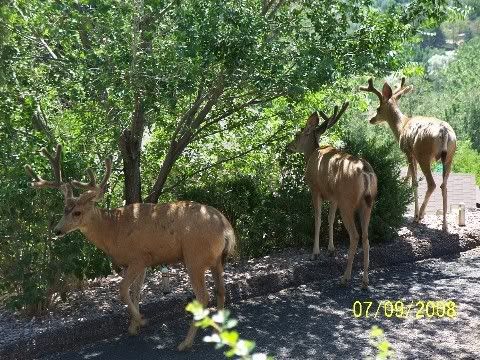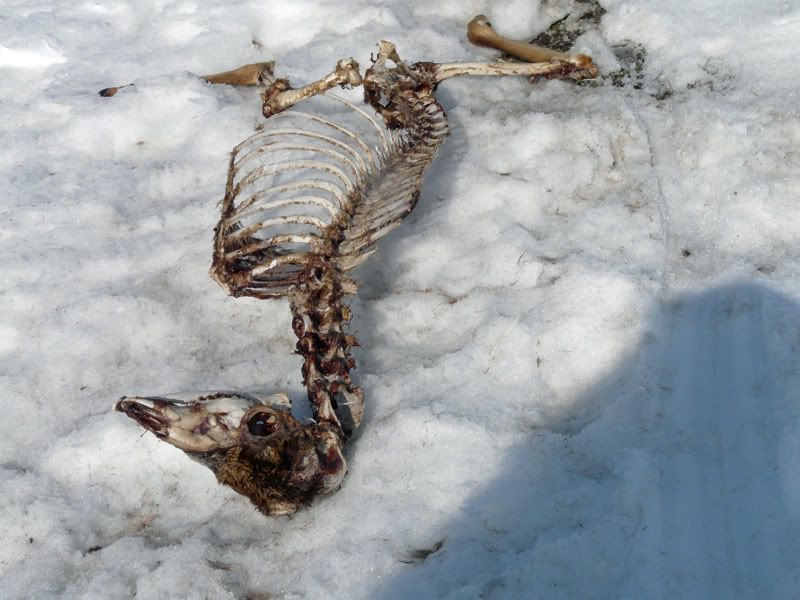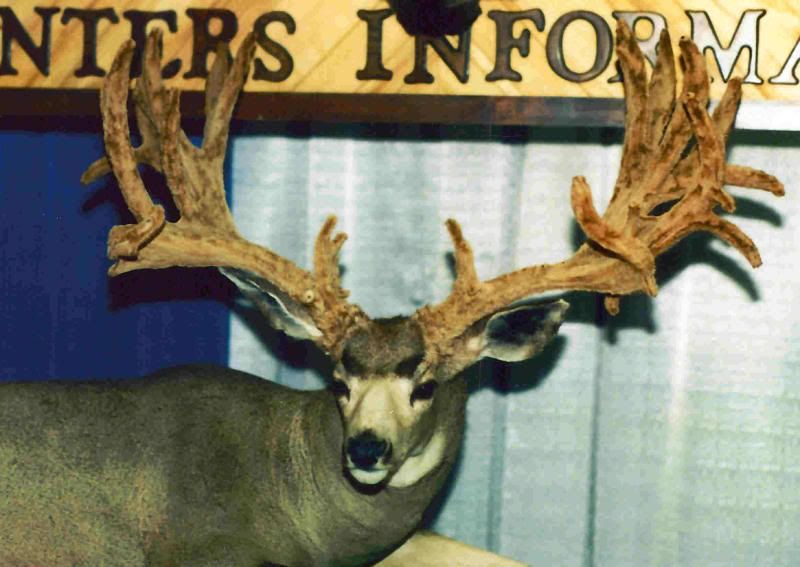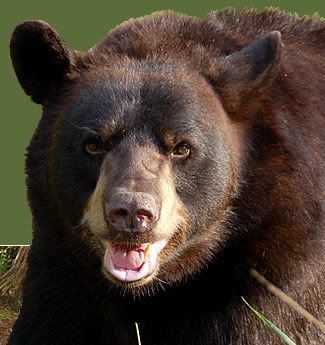Trophy wolf hunting set for Oct. 1
Posted: Wednesday, May 28th, 2008
BY: Joy Ufford
G&F sets limit at 25 wolves for 4 hunt areas
A total “harvest quota” of 25 trophy-game gray wolves, in a hunting season suggested to open Oct. 1 this year in northwest Wyoming, is a new element in this year’s Wyoming Game and Fish (G&F) annual release of proposed hunting season changes.
“The structure of the season will be an Area Harvest Quota Limitation, in which the season for each wolf hunt area will close when the harvest quota for that area has been reached,” said G&F spokesman Eric Keszler. “The proposal will establish wolf seasons and harvest quotas in four hunt areas in the Trophy Game Area of northwest Wyoming.”
A harvest quota is defined in the new regulation draft as “the total number of gray wolves for a single hunt area that may be legally taken by licensed hunters during any single gray wolf hunting season within the area where gray wolves are classified as trophy game animals.”
General licenses will cost $15 for Wyoming hunters, $150 for nonresident hunters.
Four hunt areas
The four new hunt areas are drawn from the designated trophy-game area with exceptions for national park lands. (See Wyoming Game and Fish map.)
The Green River and Gros Ventre Hunt Areas each have a harvest quota of five animals taken with an Oct. 1 opening date and closing on Nov. 30 and Nov. 15, respectively, or when the quotas are reached. The Sunlight (five wolves) and Francs Peak (10 wolves) Hunt Areas would also open Oct. 1 and run through Nov. 30 or until the quotas are filled.
The Gros Ventre Hunt Area (HA 3) begins at the junction of Highway 26/287 with Union Pass Road then follows south along Forest Service Road 600 and the Bridger-Teton National Forest boundary to Highway 189/191 where it follows the highway northwest through Bondurant to Hoback Junction, up to Highway 22 in Jackson and along Highway 22 through Wilson to the Idaho line and zigzags around Grand Teton Park and John D. Memorial Parkway. It excludes all lands within Teton Park and the National Elk Refuge.
The Green River Hunt Area (HA 4) begins where Highway 26/287 crosses the west boundary of the Wind River Reservation, south to the Continental Divide then southeast along the Divide to go west along the Middle Fork of Boulder Creek to the BTNF boundary and northwesterly to Union Pass Road.
The Sunlight Hunt Area (HA 1) begins at the junction of Highway 120 at the Montana state line, runs south to the intersection with Highway 14/16/20 in Cody, then west to Yellowstone and along the park boundary to the state line and back to Highway 120.
The Francs Peak Hunt Area (HA 2) begins at the intersection of Highway 120 and Highway 14/16/20 in Cody, runs south along the highway to the Greybull River, southwest along the river to the Shoshone national Forest, south along that boundary to the Wind River Reservation and west and south to where it meets Highway 26/287, then to the east boundary of the John D. Memorial Parkway and up along Yellowstone’s east boundary to meet back at highway 120 in Cody.
Draft rules
Draft regulations state a hunter must confirm whether or not a hunt area’s quota is met before hunting there. Only legal firearms and archery equipment can be used; it is illegal to use radio-tracking equipment to take a trophy wolf, the new regulations say.
The bag and possession limit for licensed hunters will be one wolf during the calendar year and that can be any gray wolf in the applicable hunt area.
Hunters must report taking a trophy wolf within 24 hours by calling (866) 373-5805 any time of day or night. They also must retain the skull and unfrozen pelt, with visible evidence of sex attached naturally, and present them to a district game warden, district wildlife biologist or G&F personnel at a regional office within five days for collection of biological samples. Radio-tracking devices such as electronic collars or ear tags must be surrendered to the G&F as well.
Conservative start
G&F Wildlife Assistant Chief Bill Rudd said last week the proposed wolf hunting season and harvest quota are “an extremely conservative approach to wolf hunting in Wyoming.”
U.S. Fish and Wildlife Services (FWS) Wolf Recovery Coordinator Ed Bangs, who led the recovery project to the gray wolf’s March delisting, agreed this week.
“I think the WGFD recommendation of 25 tags as a start is a good one,” he said.
Bangs said he expects most prospective Wyoming wolf hunters will buy tags to go along with another big-game hunt.
“Most hunters won’t ever hunt for wolves but take them while hunting something else,” he said. “Same thing here – it will be elk and deer hunters that harvest wolves during the fall big game season.”
The Idaho Fish and Game Commission met last week and chose to allow higher hunting quotas to take Idaho’s wolf population back to its 2005 population level.
Bangs said, “…In Idaho the (Fish and Game) Commission ignored the IDFG recommendations and passed the maximum wolf kill under wolf-hater pressure, to get the wolf population down to the lowest level in their management plan (but still 518 wolves) – so we’ll see how good (G&F) is at ‘wolf’ politics.”
The IFGC set a wolf population goal of 518 wolves and adopted seasons, limits and rules for this year.
The Idaho Wolf Population Management Plan, approved in early March, calls for managing wolves at a population level of between 2005-2007 levels (518 to 732) wolves for the first five years after delisting. With an annual estimated growth rate of 20 to 30 percent, Idaho’s population could exceed 1,000 wolves before the state’s new hunting seasons open, Sept. 15 and Oct. 1. Idaho hunt areas will be open through Dec. 31 with possible season extensions if quotas aren’t met.
In Wyoming wolves are increasing at about 24 percent annually, said Rudd.
“Wolves… in Wyoming and can sustain much higher harvest than we are proposing through hunting,” he said. “Removing some wolves through controlled hunting can also help prevent wolf-livestock conflicts in some cases.”
More information
The proposed wolf hunting season, hunt areas and regulations are included in G&F’s “Chapter 47: Gray Wolf Hunting Seasons.” To see proposed wolf hunting seasons and associated information, visit http://gf.state.wy.us/services/education/wolves/index.asp.
A public comment period on this proposal as well as other G&F hunting issues is open through 5 p.m. on July 3. The G&F Commission will take actions on the proposed trophy wolf season and other hunting issues when it meets in Dubois, July 30-Aug. 1.
Public meetings are planned across Wyoming but mainly in the western part of the state for discussion and comments on the wolf season and other 2008 hunting issues including mountain lion seasons, furbearing and trapping seasons, taxidermy regulation and issuance of licenses, special points and interstate game tags.
G&F will hold the Pinedale meeting June 10 at 7 p.m., at the Pinedale Library. On June 11, a meeting will be held at 7 p.m. at the Antler Inn. Other meetings are set for Green River (June 9), Laramie (June 9), Lander (June 10), Sheridan (June 11), Cody (June 12) and Casper (June 12).
Copies of all regulation changes and seasons can be viewed at the public meetings or by contacting the Casper Game and Fish office at (307) 473-3400. All comments must be in writing and must be submitted at the public meetings or mailed to: Wyoming Game and Fish Department, Wildlife Division, ATTN: Regulations, 3030 Energy Lane, Casper, WY 82604.

 so they have spent all kinds of money studying the problem and finally decided to have the cops catch the deer in nets, then shoot them, then feed them to the needy. Just a short distance from Helena, there is a deer unit that has a much lower than desired mule deer population. The deer in Helena are fairly safe from predators and the ones outside are not. The deer have been talking and have decided they like it better in town.
so they have spent all kinds of money studying the problem and finally decided to have the cops catch the deer in nets, then shoot them, then feed them to the needy. Just a short distance from Helena, there is a deer unit that has a much lower than desired mule deer population. The deer in Helena are fairly safe from predators and the ones outside are not. The deer have been talking and have decided they like it better in town.



 Sen. Dianne Feinstein, D-Calif., a leading gun control advocate in Congress, criticized the ruling. “I believe the people of this great country will be less safe because of it,” she said.
Sen. Dianne Feinstein, D-Calif., a leading gun control advocate in Congress, criticized the ruling. “I believe the people of this great country will be less safe because of it,” she said.
 The Utah attack involved a black bear that killed an eleven year-old boy. There have been other bear attacks in the same general area, and Utah is believed to be importing trouble bears from Yellowstone. In this case the boy’s mother is suing the forest service for $2m and the Utah DWR for $550k. The mother says it is a wrongful death case because the bear was reported in the morning of the same day and nothing was done about it.
The Utah attack involved a black bear that killed an eleven year-old boy. There have been other bear attacks in the same general area, and Utah is believed to be importing trouble bears from Yellowstone. In this case the boy’s mother is suing the forest service for $2m and the Utah DWR for $550k. The mother says it is a wrongful death case because the bear was reported in the morning of the same day and nothing was done about it.

